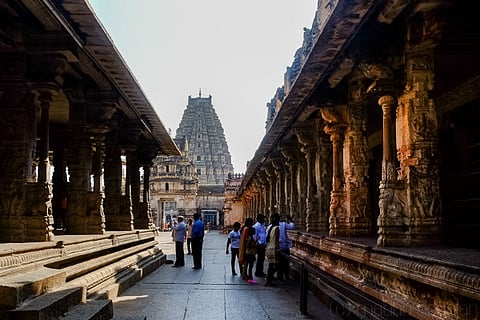

Under the scheme “Adopt a Heritage”, initiated by the Ministry of Tourism and Culture along with the Archaeological Survey of India (ASI), several monuments in the state will be put up for mass ‘adoption’ by private players in the country.
Launched on World Tourism day in 2017, the programme would entrust private companies, with the general maintenance of heritage sites in the country, by letting them adopt these sites.The scheme has been launched under the pretext of promoting Indian tourism and preserving the heritage sites. However, several concerns have been raised against the initiative by historians, activists and the public.
When the iconic Red Fort was adopted by the Bharti Dalmia group for a whopping Rs 25 crore, it became the first monument to be given away to a private entity. Massive criticism ensued this decision. That the most important monument in the political history of India was given away to a private company was a disconcerting thought for many.
Despite this outrage, one year later, Karnataka too is ready to give away some of its most precious monuments. The historic seat of the Vijayanagara Empire - Hampi, and Tipu Sultan’s Summer Palace in Bengaluru are two monuments listed in Phases 1 and 3 of the project respectively. According to sources, private entities such as Orange County Resorts and Hotels Ltd., V Resorts and online travel company Makemytrip are in talks to adopt these monuments.
On paying the quoted price and signing the MoU. these private entities will become ‘Monument Mitras’ or friends of the monument and enjoy exclusive control over a range of services and activities. From basic requirements such as security, signage, toilets, drinking water, shoe racks/covers and cloakrooms to advanced amenities such as cafeteria, an Interpretation Centre (Tourist Multi-Purpose Centre), digital screening, Light and Sound Shows with regular cultural shows, battery operated vehicles and other such services, the adoptive firms have immense control over these monuments.
Speaking to TNM, historian Arun Prasad said “Private parties here, who have or will sign the MoUs are allowed to put up advertising hoardings, sales counters and open up cafeterias,”
This means, that the private entities are free to leave their mark all over these heritage sites. Advertising their brand around the premises of their monuments, fixing up prices for visitors and offering exclusive discounts for those who avail the services of the brands are now possibilities they can explore.
Countering this criticism, many have come to the defense of this project by emphasising that the private entities have no part to play in the upkeep of the project.
“The conservation of the monuments will be ASI’s responsibility. To say ASI is ‘handing over the monument’ is incorrect. The private parties will take care of the maintenance of the amenities,” says Meera Iyer, Convenor, INTACH (Indian National Trust for Art and Cultural Heritage), Bangalore Chapter.
However that is hardly any reason to feel comforted as the majority of services apart from the actual upkeep of the monument will be under the private entity. Which means that it only remains to be seen in what ways these firms will milk these monuments to reap commercial benefits.
“By this, the corporate entities will eventually turn these historic sites into entertainment spots to attract the crowd. Pathways and the surroundings of the structure will be cleared, widened and modified in the modern sense and will thereby spoil the entire aesthetic setting of the Monument. Small relics, bits and pieces scattered around the main monument will be cleaned up and thrown away”, Mr Prasad added.
Apart from the obvious issues with the programme, historians even question the need to upgrade and develop centuries old monuments.
“Monuments do not need development. All that history and heritage need is protection and preservation. Historic monuments and heritage structures are the soul and backbone of the land which should not be marketed and commercially exploited,” he said. '
Finally, perhaps the greatest fear arising from the project is this - that these public properties will soon cease to become public. The gradual shifting of heritage sites into private hands will in one way or the other alienate us from these monuments which have been a part of our shared history. The essence of a Red Fort, a Taj Mahal or a Hampi will be tampered with the aggressive marketing of private brands, robbing the public of the sense of belonging they feel at these sites.